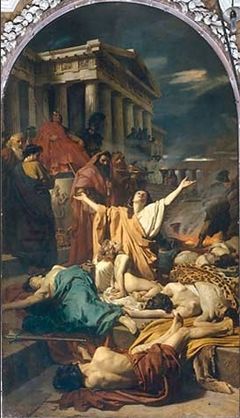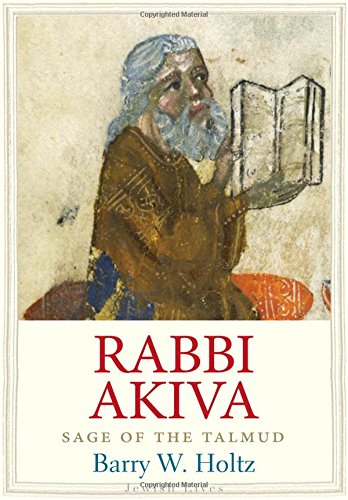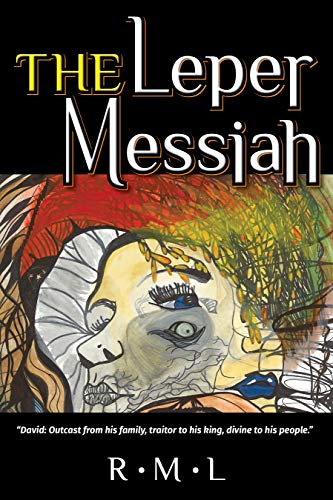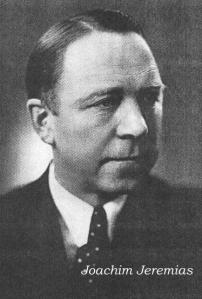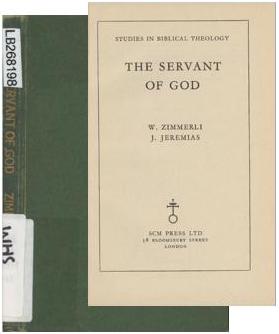When I recently posted Further Evidence of a Pre-Christian Concept of a Suffering Davidic Messiah I was patiently waiting for a certain book to be collected from an off-site library stack. I had two reasons for wanting to read that particular work. The first was from a Mormon scholar, hence slightly dubious, but nonetheless I was curious . . .
Robinson, Stephen E. 1977. “The Apocalypse of Adam.” Brigham Young University Studies 17 (2): 131–53.
Pre-Christian Judaism had a doctrine of a suffering Messiah as Jeremias has shown 21
21 Walter Zimmerli and Joachim Jeremias, The Servant of God, Studies in Biblical Theology, no. 20, (London: SCM Press, 1957), pp. 57ff
And again, this time from an article that seemed somewhat of a turning point in discussions of the Apocalypse of Adam:
MacRae, George W. 1965. “The Coptic Gnostic Apocalypse of Adam.” The Heythrop Journal 6 (1): 27–35.
Böhlig has suggested that in the redeemer-myth that appears here we have a confrontation of Iranian notions of a redeemer and the Jewish idea of the suffering Servant-Messiah which J. Jeremias has shown to have been accepted in pre-Christian Judaism.2
2 Cf. W. Zimmerli and J. Jeremias, The Servant of God, Studies in Biblical Theology 20 (London, 1957), pp. 57 ff. . . .
That settled it. I had to locate Zimmerli and Jeremias’s The Servant of God.
Now that I have it, it is clear that there is too much content for a single post so I’ll write it up here one, maybe two, arguments at a time.
The first piece of evidence given for a pre-Christian Jewish concept of a suffering messiah is found in Ecclesiasticus (also known as Sirach).
(c) Messianic exegesis (Isa. 42.1; 43.10; 49.6; 52.13; 53.11.) Messianic interpretations of certain Deut. Isa. servant passages can most probably be traced back to pre-Christian times (cf. p. 41).
(α) In Ecclus 48.10 one of the three tasks of the returning Elijah (cf. TWNT, II, 93 3,12 ff.) is described as להכין שבטי ישראל; the expression comes from Isa. 49.6 where the ‘ebed receives the mission of להקים ואת־שבטי ןעקב. The restoration of the twelve tribes is a messianic task and its assignment to Elijah must have marked the latter as the coming saviour. But since only a broad allusion to Isa. 49.6 is in question, conclusions about a messianic interpretation of Isa. 49.6 from Ecclus 48.10 alone are not quite secure (but cf. n. 305). In any case it is significant that Ecclus. explained the servant in Isa. 49.6 in an individual sense.
And here is Isaiah 49:6
And he said, It is a light thing that thou shouldest be my servant to raise up the tribes of Jacob, and to restore the preserved of Israel: I will also give thee for a light to the Gentiles, that thou mayest be my salvation unto the end of the earth.
For anyone like me who is not familiar with Ecclesiasticus 48:10 here it is in context
1 Then stood up Elijah the prophet as fire, and his word burned like a lamp.
2 He brought a sore famine upon them, and by his zeal he diminished their number.
3 By the word of the Lord he shut up the heaven, and also three times brought down fire.
4 O Elijah, how wast thou honored in thy wondrous deeds! and who may glory like unto thee!
5 Who didst raise up a dead man from death, and his soul from the place of the dead, by the word of the most High:
6 who broughtest kings to destruction, and honorable men from their bed:
7 who heardest the rebuke of the Lord in Sinai, and in Horeb the judgment of vengeance:
8 who anointedst kings to take revenge, and prophets to succeed after him:
9 who wast taken up in a whirlwind of fire, and in a chariot of fiery horses:
10 who wast ordained for reproofs in their times, to pacify the wrath of the Lord’s judgment, before it brake forth into fury, and to turn the heart of the father unto the son,and to restore the tribes of Jacob.
But note the next point:
The pre-Christian Testament of Benjamin is said to draw upon the “suffering servant” passage in Isaiah when it speaks of the future Messiah. And for those readers who (like me) are quick to claim that the Testament of Benjamin is riddled with much later Christian interpolations, do read on….
(β) In the Testament of Benjamin (second or first century B.C.) the patriarch at the beginning puts forward his brother Joseph as a model because he made intercession for his brothers with his father Jacob. In this connexion it is said in Test. B. 3.8 (Armenian):
‘In thee (Joseph) will the heavenly prophecy be fulfilled which says that the innocent one will be defiled for the sake of the guilty and the sinless one will die for the impious.‘
The heavenly prophecy must mean Isa. 53. The possibility that Test.B. 3.8 (Armenian) is a Christian interpolation does not come into the question, for nowhere is there ascribed to Jesus descent from the tribe Joseph-Ephraim, but always Davidic descent (cf. υίος Δαυίδ) from the tribe of Judah (Heb. 7.14). Since further the idea of a vicarious atoning death of the patriarch Joseph himself is nowhere else attested, the phrase
‘in thee will the heavenly prophecy be fulfilled’,
probably refers not to Joseph himself but to his posterity (cf. for this type of phrase I Sam. 3.12-14), i.e., the Messiah from the house of Joseph.
In Test. B. 3.8 we have probably the oldest testimony to the expectation of a Messiah from the tribe of Joseph. This passage should therefore be regarded as the oldest witness to the messianic exegesis of Isa. 53 (next to LXX, cf. p. 41).
In summary
We know that many Christians have always interpreted the Suffering Servant passages in Isaiah as prophecies of the suffering messiah Jesus. Jeremias’s chapter offers several lines of evidence that before Christianity some Jews likewise interpreted those Isaiah passages messianically. The first two of those arguments are
- Ecclesiasticus, a pre-Christian text, suggests that at least one messianic function of an Isaiah servant passage applies to a future appearance of Elijah, presumably as the messiah;
- The Testament of Benjamin, another text believed to be pre-Christian in its original form in one surviving manuscript line (Armenian) applies a suffering servant passage in Isaiah to a coming messiah descended from Joseph.
(Two down, eight to go. Then I will need to locate and dig out scholarship that has since, presumably, shown Jeremias’s case to be flawed.)
Zimmerli, Walther and Joachim Jeremias. 1957. The Servant of God. Revised edition. London : SCM Press.
Like this:
Like Loading...

